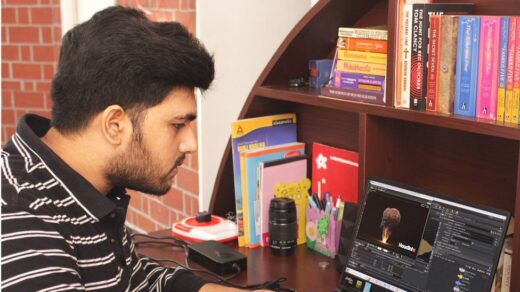The Japan Aerospace Exploration Agency (JAXA) has announced that its Moon lander has resumed operations after a week-long shutdown due to a power supply issue. The agency re-established contact with the lander on Sunday night, indicating that the problem had been resolved. The lander’s solar cells, which had been unable to generate power upon landing on January 20 due to their orientation away from the sun, are now functional again thanks to a change in lighting conditions.
Japan’s Smart Lander for Investigating Moon (Slim) spacecraft has made the country the fifth to achieve a soft landing on the moon, following the US, the former Soviet Union, China, and India. The spacecraft initially ran on battery power for several hours before being turned off to allow for potential electricity recovery when the sunlight angle changed.
JAXA shared a picture taken by Slim of a nearby rock, humorously nicknamed a “toy poodle”, on the social media platform X, previously known as Twitter. The lander’s mission is to analyze the composition of rocks in order to gather information about the moon’s origin.
Slim landed near an equatorial crater called Shioli, within 180 feet of its target, a feat JAXA described as an “unprecedented pinpoint landing”. The landing technology could potentially enable future exploration of the moon’s hilly poles, which are considered potential sources of fuel, water, and oxygen.
Despite several previous failed attempts by Japan, including a crash by start-up iSpace’s lunar lander due to onboard computer confusion about its altitude above the moon, the Slim mission has been successful. JAXA has not yet specified how long Slim will operate on the moon, but it has stated that the lander was not designed to survive a lunar night, which lasts about 14 days.
Landing on the moon has historically proven difficult, with only about half of all attempts succeeding. Prior to Japan, India was the latest country to achieve this feat, with its Chandrayaan-3 rover landing near the lunar south pole in August 2023, marking the first time this area of the moon’s surface had been reached.









